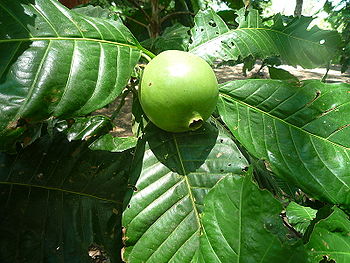Borojo
Other names : Alibertia patinoi, Borojoa patinoi
Borojó, is a mid sized tropical forest tree that belongs to the Rubiaceae family. It grows in the northwest area of Colombia, in Ecuador and Panama, in areas of high humidity (over 85%) and an average temperature of 28°C, both in the wild and on local farms. The borojo fruit is collected when the fruit matures and falls to the ground, no trees are ever cut down or destroyed, and the fruit is never plucked from the tree, as it is not edible until fully ripened.
Borojó is an Emberá word meaning: boro = head, ne-jo = fruit. Head-shaped fruit, or round, globulous fruit.
The fruit is large (about 12 cm length) with a round shape and brown color and average weight 740-1000 grs. The pulp represents 88% of the total weight. Each fruit has 90 to 640 seeds. Borojo has high levels of protein, phosphorus, ascorbic acid, calcium and iron.
Special Precautions of Borojo
Benefits and uses of Borojo are
- The Borojo fruit is highly energetic, with a high protein content. Borojo has essential amino acids for the body and its phosphorous content is surprising.
- The ripe Borojo fruit has exceptional properties for the food and health market. It has demonstrated to be very good for:
- Bronchial afflictions
- providing protein in vegetarian diets
- sugar equilibrium in the blood
- desnutrition
- increasing sexual potency
